
Do young people even care about news?
You bet they do. Whether its Millennials or their younger siblings – Gen Zs – what’s going on in the world and here in the U.S. has never been more important. Whether it’s about money, the environment, gun violence, race relations, and who’s living in the White House, they are more engaged at times than their older counterparts.
But given all the options, where do they get their news and information from?
A new survey of 1,000+ teens (13-17 year-olds) taken in June by Common Sense and Surveymonkey shows that more than three-fourths of the same say keeping up with current events is important. Not surprisingly, these teens would rather see pictures and/or videos of news stories rather than read or hear about them. Given the proliferation of video on a seemingly infinite number of sites and apps, that’s hardly a surprise.
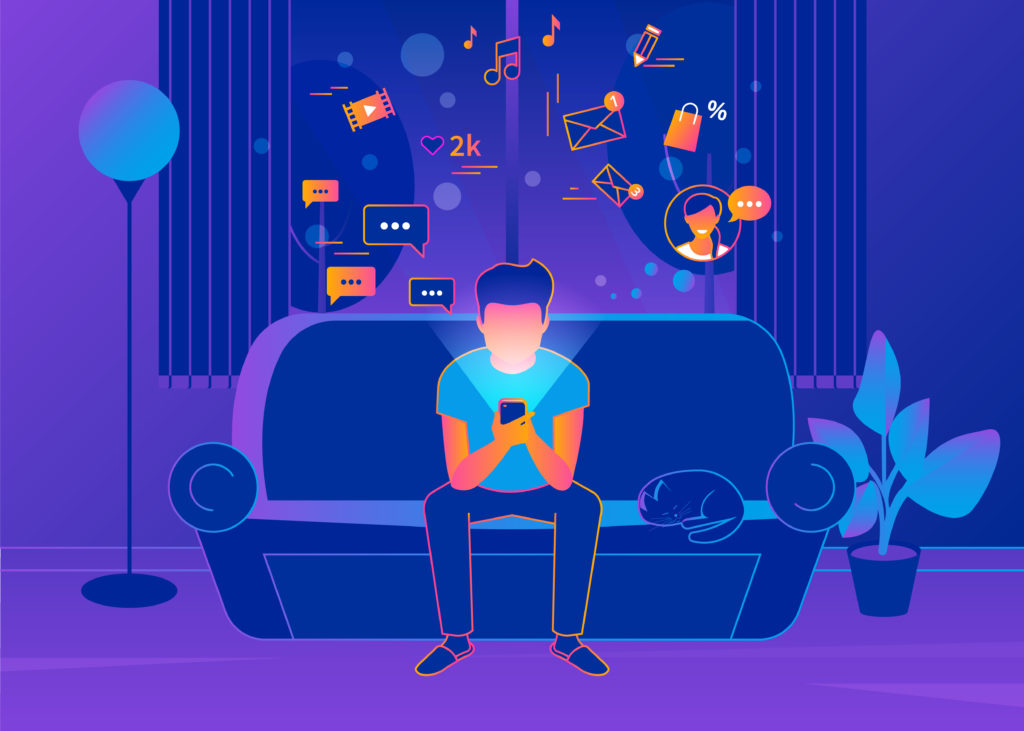
And their top source of news stories?
Social media.
In fact, nearly three in ten say they get daily news and information from social media sites like Facebook or Twitter. Again, not a shocker given their demographics. And YouTube is one of their go-to sources.
We know that social media often serves as a news discovery or referral engine, taking young people to news sites and other destinations that contain videos, articles, and other news and information.
And that’s precisely where all brands that are in the information business can capitalize on the social media habits of young people. Using the strength, influence, and ubiquity of social to drive eyeballs to your content – whether National Geographic, Cosmopolitan, or NPR – is a reliable way to move audience and generate usage.
But the content has to be good, the messaging clear, and the accessibility needs to be perfect.
In the process of measuring how teens inform themselves, Common Sense/Surveymonkey looked at the media world from many different angles – except for one:
RADIO
They asked about television, social media, YouTube, podcasts, and print.
But not radio.
And yet, one of the things the researchers learned is that seven in ten teens feel that news organizations usually get the facts straight – versus only 38% for celebrities, influencers, and social media stars.
For a growing number of Americans of all ages – more than 100 million users across all platforms – perhaps the most credible news organization in the country is NPR/public radio. But these teen respondents did not have a chance to rate public radio – and its many outlets, including streaming, podcasts, smart speakers, apps, and myriad other avenues that are popular with teens.
Our Public Radio Techsurvey 2019 (our eleventh in a row) debuted on Monday to its 54 stakeholder stations across the country. Next week, I’ll have the honor of presenting it to hundreds of professionals at the Public Radio Program Directors conference in Minneapolis.
While public radio has to work hard to earn the respect and time of every Gen Z as well as their older Millennial counterparts, the indicators are that NPR and its affiliated stations perform exceptionally well among young consumers. Now, we don’t have enough teens in the sample to run a separate breakout, we have the ability to focus on Millennials. And they have a great story to tell.
We asked our entire sample about the news sources they frequently use to access and discover news. And when we isolate Millennials, we see a strong reliance on public radio – over every other source listed. In fact, more than three-fourths say they frequently turn to public radio/NPR (on any device) for news and information.
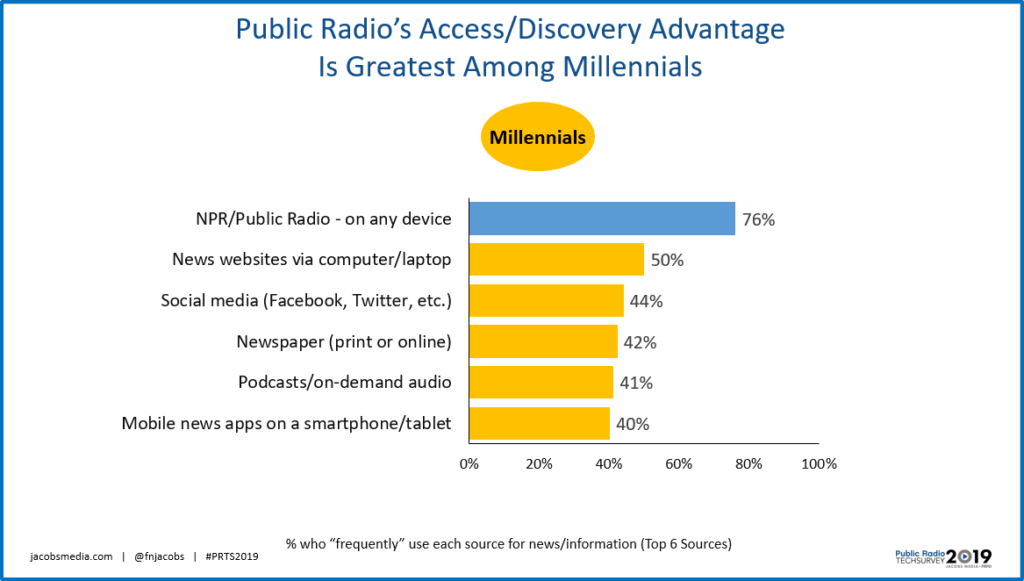
Now, let’s get real. This study doesn’t represent all Millennials. Our sample of Generation Y in PRTS 2019 is just 7% of the total. And they are already listening to public radio. Many are contributing money, too. So, we shouldn’t be shocked public radio/NPR is their top choice.
But that said, the 26-point gap between frequent reliance on public radio over the #2 most-frequently mentioned source – news websites – is a greater margin than we see for Xers, Boomers, and members of the Silent Generation.
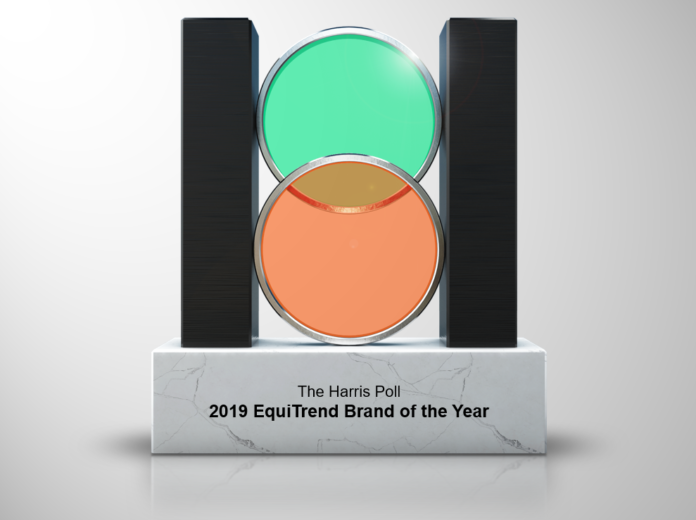 And it’s no coincidence NPR was named the 2019 Harris Poll EquiTrend “News Service Brand of the Year,” an honor it has earned before. Unlike the Public Radio Techsurvey, this Harris research report surveys 45,000+ Americans, ages 15 and older. So, yes – teens are very much included in its survey.
And it’s no coincidence NPR was named the 2019 Harris Poll EquiTrend “News Service Brand of the Year,” an honor it has earned before. Unlike the Public Radio Techsurvey, this Harris research report surveys 45,000+ Americans, ages 15 and older. So, yes – teens are very much included in its survey.
These days, public radio programmers and news directors are taking a hard look at their opportunities among Millennials, the generation that could keep the system healthy and thriving for decades to come. They may not be “tuning in” on AM/FM radios like their parents (and grandparents) did, but they are utilizing other sources: podcasts and on-demand programming, the NPR One app, streams, as well as Alexa and Google Home.
Abby Goldstein is the incoming Executive Director of PRPD, a veteran of programming public radio music and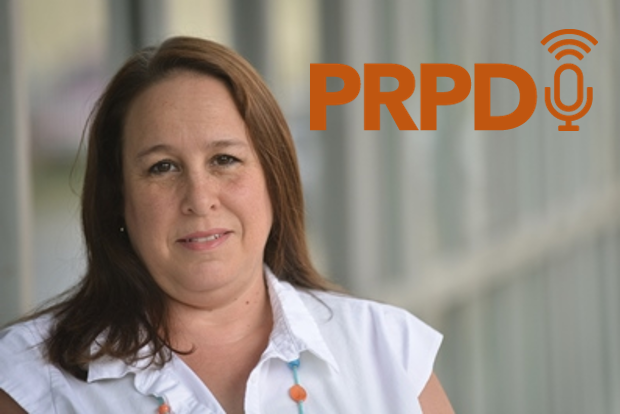 news/talk stations. And her vision is that the medium has to be focused on its listeners:
news/talk stations. And her vision is that the medium has to be focused on its listeners:
“The hallmark of public radio is our devotion and attention to our audience. Our listeners are not just a bunch of numbers and demos by which we set ad rates. They are real people who rely on us to stay connected, informed, enriched. We believe in programming to a set of core values that we share with our audience.”
At this year’s PRPD Content Conference (the name tells you all you need to know), news will once again be a significant focus. After all, the news cycle is like a fire hose and the most successful public radio stations are in the news/talk format.
As mentioned, I’ll be presenting this 20,000+ person study to the assembled masses of eager public radio programmers and managers – and the “Trump – Bump or Slump?” question will be a major topic, as it has the past three years.
But beyond the research, PRPD has some strong sessions on news and information.
A session called “Culture of Journalism: Editorial and Independence” will focus on the reality that public radio newsrooms are increasingly becoming the primary sources of news for their audience.
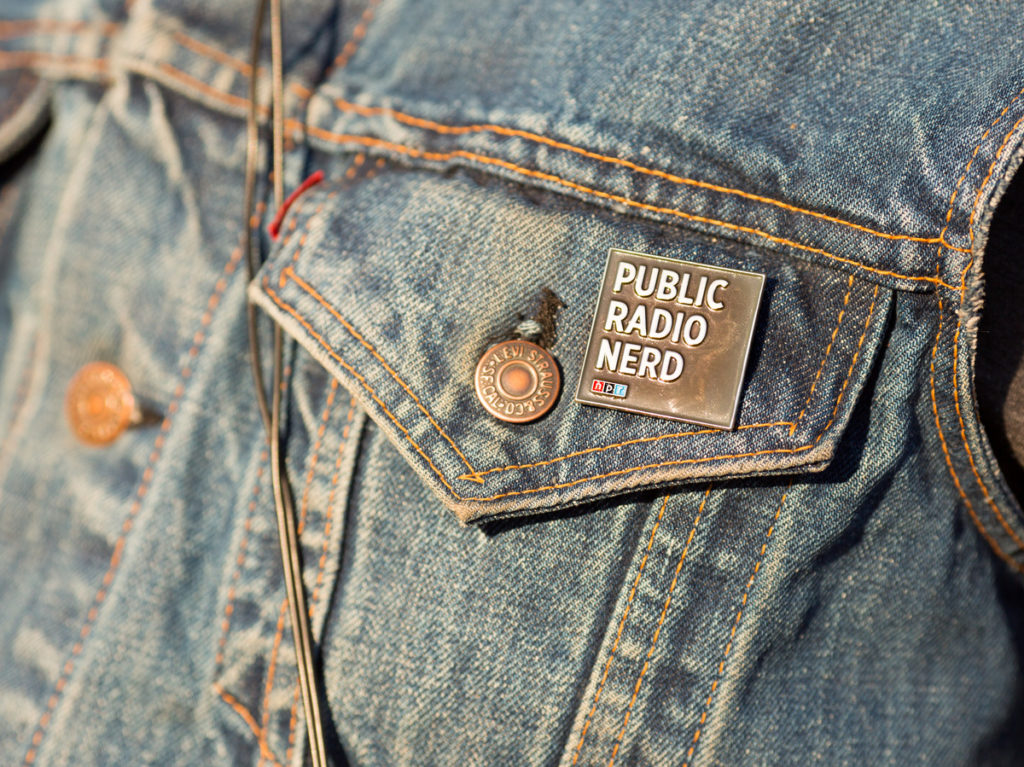
And then there’s “Election 2020: Coverage That Matters,” a session that will be all about audience engagement in content creation, and what that may mean for the next 14 months leading up to the election.
While news is critically important content to public radio stations, the key to their success has been the trust bridge they have erected with their audience.
If you’re in public radio, we hope you can join us at PRPD in Minneapolis next week. And if you’re on the commercial side of radio, consider this:
Public radio has a strong organization dedicated to just programmers – content creators – that meets ever year to talk about just one thing:
The product
What a concept.
Information about the PRPD Content Conference can be found here.
Full disclosure: I am a PRPD board member since 2017. Jacobs Media consults NPR, and provides research and advice to stations, networks, and organizations across the public radio system.
- What To Do If Your Radio Station Goes Through A Midlife Crisis - April 25, 2025
- A 2020 Lesson?It Could All Be Gone In A Flash - April 24, 2025
- How AI Can Give Radio Personalities More…PERSONALITY - April 23, 2025




“But the content has to be good, the messaging clear, and the accessibility needs to be perfect.” How true, along with the potential of Public Radio and “News You Can Use” on the Real Radio Dial. Thank you, FJ!